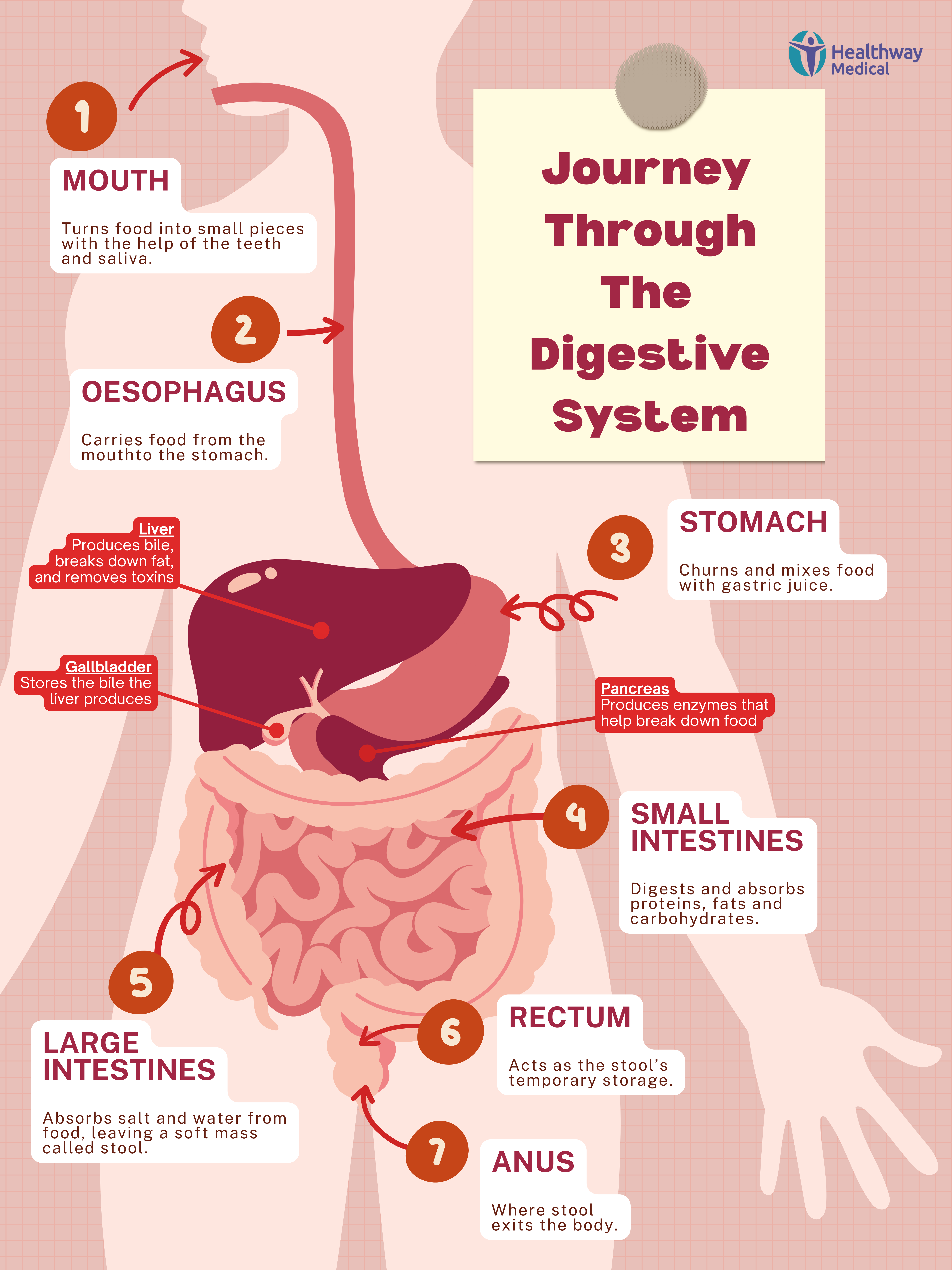
In fast-paced Singapore, long hours, irregular meals, and constant stress are part of everyday life. Over time, these routines can wear down the digestive system in subtle ways. Discomfort like bloating, reflux, or stomach pain often begins gradually, making it easy to ignore — especially when the symptoms seem to come and go.
As these signs become more familiar, many people simply work around them. For busy executives, that often means pushing through the day without stopping to consider the cause. But what seems minor at first can come at a cost. When symptoms return often enough, the price paid is felt in energy, focus, and overall wellbeing.
Recognising how daily habits shape your gut health is often the first step towards knowing when to act. In some cases, a health screening, such as a gastroscopy, might be recommended to better understand what’s going on beneath the surface. But first, let’s take a closer look at what might be causing these issues.
Why Are Digestive Issues So Common Today?
Digestive issues rarely appear without reason. In most cases, the symptoms reflect the habits we repeat every day. How we eat, how we cope with stress, and what we ignore all play a part. To understand why they are becoming more common, it helps to start with the routines that have become part of daily life.
Everyday Habits That Can Trigger Digestive Issues
Habits such as skipping meals, eating at irregular times, or lying down too soon after eating can interfere with how your digestive system works. These patterns might increase stomach acid production or slow digestion, leading to symptoms like bloating, discomfort, or reflux. When meals do happen, consuming trigger foods such as spicy dishes, caffeine, alcohol, or high-fat options can further aggravate symptoms. For those who smoke and/or vape, this habit also affects digestion by weakening the muscles that keep stomach acid in place, which adds pressure on those already prone to reflux.
When Digestive Issues Become a Pattern
Digestive discomfort or pain often starts as something manageable. People might adjust their meals, avoid certain foods, or rely on medicine for their acid reflux flare-ups. These changes might be the best course of action at that point in time, but after awhile, it becomes easier to tolerate the symptoms than to question why they keep returning. When this becomes the norm, early signs of a deeper gastric issue can go unnoticed.
Never Ignore Ongoing Digestive Symptoms or Issues
Some digestive issues might respond to lifestyle adjustments at first, but when discomfort keeps coming back or no longer improves with basic changes, it could suggest something more. Conditions like gastroesophageal reflux disease (GERD), chronic gastritis, or Helicobacter pylori (H. pylori) infection can lead to longer-term complications such as Barrett’s oesophagus or an increased risk of gastric cancer. Paying attention when symptoms shift from occasional to ongoing is a key step in protecting your digestive health and deciding when to consider a health screening.
How Digestion Works and Why It Matters
Understanding how digestion works makes it easier to recognise when something is off. Now that we’ve looked at the habits and patterns behind common symptoms, it helps to understand what happens inside the body.
Digestion begins in the mouth, where food is chewed and mixed with saliva. It then moves down the oesophagus into the stomach, where acids and enzymes start breaking it down. From there, it enters the small intestine for nutrient absorption. What remains passes into the large intestine, where water is absorbed and waste is excreted.

When any part of the digestive tract is affected, whether by infection, inflammation, or anatomical issues that interfere with its normal function, symptoms such as reflux, bloating, or discomfort may follow.
To support digestive health, consider these simple habits:
• Eat slowly and chew thoroughly
• Avoid lying down after meals
• If possible, try to avoid spicy, fatty, or acidic foods (if they trigger symptoms)
• Manage stress where possible (it can affect gut motility and microbiota balance)
• Stay well hydrated
• Monitor symptoms that continue
These steps can improve comfort, but they might not explain why issues persist. When that happens, looking deeper becomes necessary.
What Is a Gastroscopy and Do You Need One?
While understanding how the digestive system works and changing one’s daily habits can support gut health, there are times when symptoms remain unexplained. When this happens, a visit to a health screening centre would help shed light on what might be occurring beneath the surface, especially when symptoms persist without a clear cause.
In such cases, a gastroscopy might be recommended. It is a procedure that allows doctors to assess the lining of the oesophagus, stomach, and duodenum, which is the beginning of the small intestine. The procedure is done using a thin, flexible tube with a small camera at the tip. This is gently inserted through the mouth to provide a clear view of the inner lining of the upper digestive tract.
A gastroscopy can help detect:
Functional and inflammatory conditions:
• Gastritis – irritation or inflammation of the stomach lining that can cause pain or nausea.
• Peptic ulcers – deeper sores in the stomach or duodenum that might bleed or cause persistent pain.
• GERD – chronic acid reflux that can damage the oesophagus.
• Oesophagitis – inflammation of the oesophagus that may result from acid exposure, medications, or infection.
Structural abnormalities:
• Hiatal hernia – when part of the stomach moves upward into the chest and contributes to reflux.
Infections:
• H. pylori infection – a common bacterial cause of ulcers and chronic inflammation.
Tissue changes and early-stage conditions:
• Barrett’s oesophagus – cell changes in the oesophagus linked to chronic reflux, which may raise cancer risk.
• Polyps or abnormal growths – tissue changes in the digestive tract that might need removal or monitoring.
• Early signs of gastric or oesophageal cancer – changes that might be detected before obvious symptoms develop.
Issues that may not be visible externally:
• Gastrointestinal bleeding – internal bleeding caused by ulcers, erosions, or abnormal vessels.
By uncovering these early, a gastroscopy helps confirm a diagnosis, rule out more serious concerns, and support timely decisions about care and treatment.
Why Gastroscopy Screening Matters for Gastric Symptoms
Gastric symptoms don’t always start as disruptive. But when they return often enough, they begin to shape your routine in small but steady ways. The price to pay builds slowly, showing up in habits you adjust without thinking and discomfort you begin to work around. The cost of neglect reveals itself when what once felt negligible starts to affect how you eat, move, and feel.
At Healthway Screening, gastroscopy screening is offered as part of a targeted health screening plan. This procedure provides a clearer view of the upper digestive tract and might uncover issues that routine medical checks do not always detect. Where further evaluation is needed, patients can be referred to specialists at Nobel Gastroenterology Centre, part of the Healthway Medical network in Singapore, for ongoing care.
If you’ve been living with persistent gastric symptoms, you can contact us to learn more about gastroscopy screening and how it might support your next steps.





